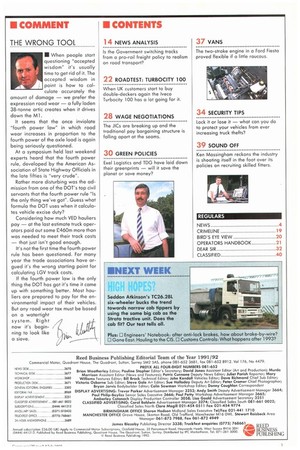THE WRONG TOOL
Page 3

If you've noticed an error in this article please click here to report it so we can fix it.
• When people start questioning "accepted wisdom" it's usually time to get rid of it. The accepted wisdom in point is how to calculate accurately the amount of damage — we prefer the expression road wear — a fully laden 38-tonne artic creates when it drives down the MI .
It seems that the once inviolate "fourth power law" in which road wear increases in proportion to the fourth power of the axle load is again being seriously questioned.
At a symposium held last weekend experts heard that the fourth power rule, developed by the American Association of State Highway Officials in the late fifties is "very crude".
Rather more disturbing was the admission from one of the DOT's top civil servants that the fourth power rule "Is the only thing we've got". Guess what formula the DOT uses when it calculates vehicle excise duty?
Considering how much VED hauliers pay — at the last estimate truck operators paid out some £460m more than was needed to meet their track costs — that just isn't good enough.
It's not the first time the fourth power rule has been questioned. For many year the trade associations have argued it's the wrong starting point for calculating LGV track costs.
If the fourth power law is the only thing the DOT has got it's time it came up with something better. Most hauliers are prepared to pay for the environmental impact of their vehicles. But any road wear tax must be based on a watertight system. Right now it's beginning to look like a sieve.
















































































